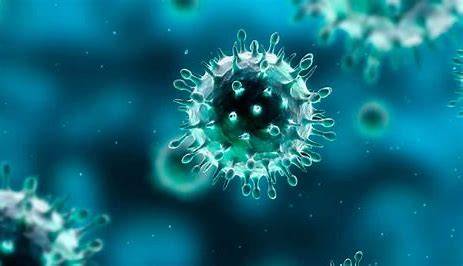No showerhead or toothbrush bristle is the same, with US researchers finding a rich, diverse world of viruses living in biofilms coating surfaces in bathrooms across the US and Europe.
An illustration of a bacteriophage, a tiny virus that infects and destroys bacteria
Hot showers are great but you're not the only organism bathing in the warming wash of water — new research from the US has found diverse communities of viruses are dwelling on your showerhead too.
Apparently, that's good news.
"The number of viruses that we found is absolutely wild," said Northwestern University's Erica Hartmann, a microbiologist who led the study. "We found many viruses that we know very little about and many others that we have never seen before. It's amazing how much untapped biodiversity is all around us. And you don't even have to go far to find it; it's right under our noses."
Or bathroom faucets, it seems.
Viruses are most often associated with the diseases they cause in humans and other animals. However, not all viruses are pathogenic in humans and can provide useful services to science. Most of the viruses identified by Hartmann and her team are known as bacteriophages. Rather than being a hazard to humans, these phages infect bacteria.
In the newly published study in the journal Frontiers in Microbiomes, Hartmann's research group observes that most Americans spend two-thirds of their lives in their homes, and so learning about the organisms that occupy this shared space is valuable to understanding the quality of living spaces.
Researchers studying viral communities on showerheads and toothbrushes found over 600 unique viral species, highlighting significant diversity in these environments. Their work, part of "Operation Pottymouth," challenges the idea that toothbrush bacteria primarily come from fecal aerosols, suggesting they mostly originate from users' mouths instead.
The study indicates that while viruses are often seen as harmful, they could be leveraged for beneficial purposes, such as developing treatments for bacterial infections and cleaning environments without traditional antimicrobials.


